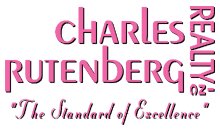Here’s the latest letter sent out to my clients. It’s a brief overview I wanted to create to inform people that an IRA can be used to buy property, and it’s a valuable investment tool for the right application.
Here’s the full article.
~~~
An IRA Can Purchase and Hold Property
I often mention to clients how you can use your IRA to buy a property. If you didn’t know this was possible, it’s worth becoming familiar with the idea.
The first thing to say about this is that it is invariably complicated, so turning to a professional for advice is absolutely recommended if you want to explore the idea.
Requirements
The point of the IRA is to defer taxation on income by saving it for a later date (usually retirement), and the IRS has stringent requirements that an IRA must follow in order to keep that deferment protected. So,
- When using the IRA to buy a property you must be careful not to break the IRS requirements, or you can end up paying taxes on funds you were trying to protect.
- Buying property through an IRA is almost always for investment purposes, because the IRA itself owns the property, and neither you nor your family can use it for any personal use during the IRA ownership.
- An ordinary IRA won’t do the job; you’ll need a “self-directed” IRA, which must be held by a fiduciary firm charging custodial fees.
- Furthermore, all monies involved must go through the IRA, so any income goes into the IRA, and any expenses must come out of the IRA.
- Cash flow can be a problem if there’s not enough money in the IRA, because you have limits on how much you can put in each year.
- If you’re forced to pay surprise costs on the property and have to add money into the IRA above the limit, you will incur significant penalties from the IRS.
Limitations
It is possible to get a mortgage to buy a property through a self-directed IRA, through a specialized loan, which also incurs some different risks. But typically property is bought outright with adequate cash already built up in the IRA.
And property owned in an IRA loses the depreciation and other tax deductions available to property you hold directly. Remember there’s no sweat equity here – the IRA has to use and pay outside contractors for all work on the property.
Possibilities
So what’s the value of using a self-directed IRA to own property? You must have a solid plan for generating income from property, or simply accruing a desirable holding for later life, on which you want to defer taxes on gains. And a self-directed Roth IRA can offer additional tax benefits.
It’s the IRA that is generating income, which it can reinvest into more properties, it can fix and flip or hold, and it can even take on partners, who can contribute outside of the IRA. And more than one IRA can combine to purchase one property (perhaps from spouses, for example).
Used wisely, you could work your IRA to build additional wealth without tax consequences, inside the IRA, until that time when you begin to withdraw funds later in life.
You’d lose whatever investment returns you could expect from an ordinary IRA through a broker, but you’d do this to gain a truly self-directed investment program.
It’s obvious that you have to know what you’re doing to consider using an IRA to buy and hold property – please heed my point about needing professional advice. And please, nothing here can be regarded as tax or investment advice.
But, as with the Land Trust that I wrote about once, the IRA is another vehicle for owning property that I wanted to mention, so you know that it exists as an option.
© Stephanie Passman



